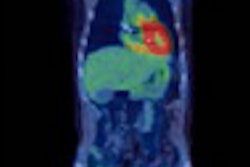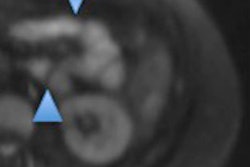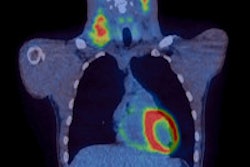
Dutch researchers are calling into question the value of FDG-PET after finding a high percentage of false-positive results when the modality was used to assess treatment response of patients with Hodgkin's and non-Hodgkin's lymphomas, in a meta-analysis published in the November issue of the European Journal of Radiology.
The rate of false-positive results among all biopsied FDG-avid lesions scanned by FDG-PET during or after treatment averaged between 23% and 83%. The calculations prompted study co-authors Drs. Hugo J.A. Adams and Thomas C. Kwee to suggest a reconsideration of the role of early and end-of-treatment FDG-PET.
"In fact, the present findings seriously question the justification of performing FDG-PET scans for lymphoma response assessment (both at interim and after completion treatment)," wrote the authors from the University Medical Center Utrecht. "These investigations are costly, expose the patient to potentially harmful ionizing radiation, and provide misinformation in an unacceptably high number of patients that can lead to either incorrect treatment changes and prognostication" (EJR, November 2016, Vol. 85:11, pp. 1963-1970).
FDG-PET confidence
FDG-PET has long been relied upon for staging a variety of cancers including lymphoma, with the exception of some non-FDG-avid lymphomas. According to a 2016 study in CA: A Cancer Journal for Clinicians, lymphomas account for approximately 5% of all newly diagnosed cancer cases and are responsible for approximately 4% of all cancer-related deaths in the Western world
Recent international guidelines also recommend FDG-PET scans to assess early, or interim, response to treatment, as well as imaging after therapy to restage and evaluate the regression or progression of lymphoma.
"However, exact data on the proportion of false positives from interim and end-of-treatment FDG-PET scans with histopathology as reference standard are missing," the authors noted.
Medline search
Adams and Kwee initially discovered 748 potentially eligible articles in a Medline search. That total eventually was narrowed to 11 studies with a total of 139 patients that met the authors' criteria. All of the subjects underwent biopsy of a residual FDG-avid lesion. There were no available studies on interim FDG-PET in Hodgkin's lymphoma.
The authors cautioned there may be an "unknown risk of bias in the domain of the reference test in all 11 studies, because these studies did not report whether the interpreters of the biopsies were blinded to the FDG-PET scans."
Still, the compilation of the 11 studies showed that FDG-PET imaging found that false-positive readings occurred in a majority of lesions (56%) that are FDG-avid during and after therapy for lymphoma. The greatest number of false positives (83%) was discovered on interim FDG-PET scans in non-Hodgkin's lymphoma cases.
In addition, the proportion of false-positive results among all biopsied FDG-avid lesions performed during or after completion of treatment ranged between 8% and 90%.
| False-positive rates | ||
| False-positive rate | Range | |
| Interim FDG-PET in non-Hodgkin's lymphoma | 83% | 72% to 90% |
| End-of-treatment FDG-PET in Hodgkin's lymphoma | 23% | 5% to 65% |
| End-of-treatment FDG-PET in non-Hodgkin's lymphoma | 31% | 4% to 84% |
Although the rate of false positives was lower on end-of-treatment FDG-PET scans in both Hodgkin's lymphoma and non-Hodgkin's lymphoma cases, the authors still considered the results very high. There were no results for interim FDG-PET in Hodgkin's lymphoma because studies are lacking.
As for reasons why the high false-positive rates occurred, Adams and Kwee cited inflammatory changes most likely caused by the cancer treatment itself.
"Inflammatory tissue contains neutrophils and activated macrophages that actively accumulate FDG, and is therefore indistinguishable from viable residual tumor at FDG-PET," they noted.
Conversely, poor positive predictive values of FDG-PET during and after therapy would seem to contradict recent international guidelines on the role of FDG-PET imaging in lymphoma. Two studies cited by the Dutch researchers support FDG-PET's role in evaluating the response to both Hodgkin's and non-Hodgkin's lymphoma treatment.
Adans and Kwee cited several limitations of their study, including a "high risk of bias," because three of the 11 studies used somewhat outdated standalone PET scanners, while four papers reported no international standardized FDG-PET interpretation criteria.
However, they agreed that both interim and end-of-treatment FDG-PET scans in patients with lymphoma "suffer from a very high number of false-positive FDG-avid lesions," they wrote. "This finding, in combination with the previously reported high number of false-negative FGD-PET scans residual disease detection, suggests that the role of interim and end-of-treatment FDG-PET should be reconsidered."



















